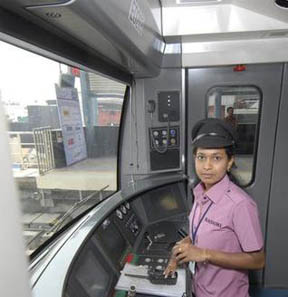 NEW DELHI: Highlighting the need to ensure place for women in India’s socio-economic set up, the Economic Survey today said the government has to play a pro-active role to change the “patriarchal mindset” prevalent in the country.
NEW DELHI: Highlighting the need to ensure place for women in India’s socio-economic set up, the Economic Survey today said the government has to play a pro-active role to change the “patriarchal mindset” prevalent in the country.
“With women accounting for nearly 48 per cent of India’s population (Census 2011), there is need to ensure and safeguard their place in the socio-economic milieu,” said the Survey for 2014-15, tabled in Parliament.
Since this requires a change in the patriarchal mindset of the larger population, government has to continue to be a proactive facilitator of this change through consistent policies, it added.
The document also noted that India is somewhat of a paradox on gender issues.
“India has had prominent and visible women leaders such as a female President, a female Prime Minister, several female heads of large political parties at the national and state levels, several Cabinet rank ministers, and several captains of industry (particularly in the banking sector),” it said.
And yet, according to the Gender Inequality Index (GII) India ranks 127 out of 152 countries, it added.
The GII is a composite measure reflecting inequality in achievement between women and men in three dimensions — reproductive health, empowerment and the labor market.
Drawing attention to the declining sex ratio in the country, the survey said the number of girls to boys at birth declined from 927 girls per 1,000 boys in 2001 to 918 girls for every 1,000 boys in 2011.
It also called for an equal focus on both men and women when it came to taking up family planning measures.
“There appears to be renewed focus on controlling the rise in population, directed in particular at women, and through means that blur the lines between persuasion and coercion,” the survey said.
Hitting out at the current practices, it said: “India’s population policy seem focused on extending family planning measures, mainly contraceptives for women, leaving them with little reproductive choice or autonomy.”
Government expenditures are skewed towards female sterilization, it added.
Of the total sterilization operations performed in 2012-13, tubectomy/laproscopic sterilizations account for 97.4 per cent, while male vasectomy operations, considered less complicated risky, account for only 2.5 per cent, it said.
Out of the budget of Rs 397 crore for family planning for 2013-14, 85 per cent, Rs 338 crore has been spent on female sterilization, it added. .
The negative fallouts of pursuing a population policy, which largely focuses on birth control, also contributes to declining child sex ratios: if every family is to have fewer children, there is a greater anxiety that at least one of them should be male, said the Economic Survey.
Calling for a change in the mindset, it said: “Review the family planning program in India and reorient it such that it is aligned with reproductive health rights of women, and needs of India’s population.”
With a view to increasing the very low value that Indian society puts on a girl child, the government last month launched the ‘Beti Bachao, Beti Padhao’ campaign from Panipat in Haryana.–PTI






